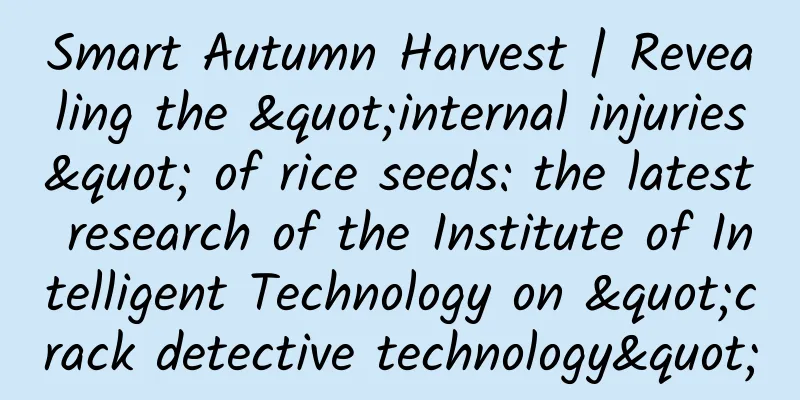Genetically modified organisms have always existed in nature, such as cross-pollination of plants.

|
The word "genetically modified" is often mentioned in our lives, and even became one of the top ten technology buzzwords of the year in 2014 in Global Science, the Chinese version of Scientific American magazine. So what exactly is GMO? Simply put, one or more genes from one organism are transferred to another organism, thereby changing the biological characteristics of the latter. This gene transfer phenomenon can be achieved through the use of molecular biological technology, but it can also occur spontaneously without human guidance. Spontaneous genetic modification is widespread in nature, for example, the integration of hepatitis B virus DNA in chronic viral vectors into human sperm chromosomes, the insertion of bacteriophages into lysogenic cell DNA, and the natural genetic modification system of Agrobacterium. Agrobacterium tumefaciens attaches to plant cells Among them, the genetic modification process of Agrobacterium has been thoroughly studied and has become one of the important means of genetic modification technology. There are two main types of Agrobacterium: Agrobacterium tumefaciens and Agrobacterium rhizogenes. Agrobacterium tumefaciens can chemotactically infect the wounded parts of most dicotyledonous plants under natural conditions and induce crown galls, while Agrobacterium rhizogenes induces hairy roots, which are characterized by the massive proliferation of highly branched root systems. These traits are produced because both types of Agrobacterium have a T-DNA on their plasmids. After Agrobacterium enters cells by infecting plant wounds, it can insert the T-DNA into the plant genome. Therefore, Agrobacterium possesses a natural plant genetic transformation system and is therefore known as “nature’s smallest genetic engineer” [1]. Using Agrobacterium, people can insert the target gene into the modified T-DNA region, use the infection of Agrobacterium to achieve the transfer and integration of foreign genes into plant cells, and then obtain transgenic plants through cell and tissue culture technology. This technology has been widely used. An article published in the Proceedings of the National Academy of Sciences (PNAS) in 2015 mentioned the natural genetic modification process of Agrobacterium. Tina Kyndt and colleagues obtained 304 plant samples from the International Potato Center, of which 291 were cultivated sweet potatoes from South America, Central America, Africa, Asia and Oceania, and the other 9 were wild types. They performed genetic analysis on these samples and found one or more T-DNA sequences in all cultivated sweet potatoes, but not in wild-type sweet potatoes. Researchers have provided an explanation for this phenomenon that the T-DNA of Agrobacterium naturally appears in sweet potatoes through horizontal transfer during the infection of wild sweet potatoes by Agrobacterium [2]. Therefore, cultivated sweet potato is actually a genetically modified crop, and the fact that it has survived thousands of years of natural selection and artificial domestication may be due to the key role played by the T-DNA in these bacteria. Sweet potatoes, a genetically modified crop, have been eaten for thousands of years without any adverse reactions. However, the question "Are genetically modified crops safe?" is often questioned by people and even causes social panic. This is directly related to some untrue and biased reports. In August 1998, Professor Pusztai of the Rowett Institute in Scotland reported that after they fed experimental mice an insect-resistant transgenic potato that expressed snowdrop lectin, the mice experienced weight and organ loss, damage to their internal organs and immune systems, and severe stunting of their growth. In 1999, John Losey, a researcher at Cornell University in the United States, published a report in the UK stating that feeding monarch butterflies with leaves coated with Bt corn pollen resulted in the death of 44% of the larvae. In November 2001, David Chapela and David Quist, microbial ecologists at the University of California, Berkeley, published an article in Nature magazine, stating that gene sequences similar to the "35S promoter" of the cauliflower mosaic virus and the genetically modified insect-resistant corn code-named "Bt11" of Novartis Seed Company were found in six corn variety samples collected in the Oaxaca region in southern Mexico. In May 2005, the British newspaper The Independent revealed a report from the well-known biotechnology company Monsanto, which showed that mice fed with genetically modified corn showed organ mutations and changes in blood composition [3]. However, these reports were not recognized by the authoritative organizations in the end, because these experiments more or less had problems such as irrationality in the experimental design itself, loopholes and shortcomings in the experimental process, and non-repeatability of the experiments, or even falsity of the experimental results or deliberate concealment of some key data, so the credibility of these reports is highly questionable. In addition to the above-mentioned controversial incidents regarding GMOs that have occurred abroad, there are also similar voices in China. In June 2003, Greenpeace published a report titled "Comprehensive Report on the Environmental Impact of Bt Cotton" at a conference in Beijing. This report described many possible adverse effects of Bt cotton, such as genetic pollution caused by gene flow and the breeding of super pests [4]. Subsequently, regarding the Bt genetically modified insect-resistant cotton incident, scientists from many countries quickly jointly refuted Greenpeace's views and put forward reasonable explanations. However, gene drift has long existed in nature. For example, in 2015, a study by scientists at the University of Tours in France suggested a natural genetic modification phenomenon. This purely natural genetic modification phenomenon occurred between three completely different species. Over millions of years of evolution, parasitic wasps have completely domesticated some viral genes to help them safely parasitize in caterpillars. Then, by chance, the parasitic wasps pass these viral genes to butterflies and moths through their host caterpillars. During the long process of natural selection, this gene transfer between the three species not only did not cause people to worry about it, but it also gave each species unique genetic advantages, helping them survive the evolutionary pressure. In essence, cross-pollination and natural hybridization in the plant kingdom also belong to gene transfer, and it is not the transfer of one or more genes, but the transfer of large quantities of genes. At this time, if someone suggests that gene transfer between the same species is not considered genetic modification, then the gene transfer between Agrobacterium and sweet potato is a natural genetic modification process occurring between microorganisms and higher plants, which also shows that genetic modification can occur naturally. Nowadays, genetically modified technology has been rapidly developing in countries around the world, and more and more scientists have chosen to support genetic modification. They are committed to applying genetically modified technology to benefit mankind and working hard to solve and prevent possible problems. The application scope of genetic modification technology has also expanded from the earliest medical field to the current widespread use in agriculture, industry, energy and environmental protection. Among them, genetically modified crops are developing the fastest. Genetically modified crops with excellent traits such as disease resistance, insect resistance, drought resistance and salt-alkali resistance are being promoted on a large scale [5]. Therefore, people should look at it rationally and learn to distinguish the authenticity of some reports. I believe that with the progress of mankind and the development of the times, the issue of GMO safety will be completely resolved one day. |
<<: Do you think metals are all silvery white? Wrong! In fact, they are all black!
>>: Do cockroaches no longer like sweets?
Recommend
Galaxy-I is 40 years old! Inheritance and transcendence, the glorious road of China's supercomputer!
On December 22, 1983, my country's self-devel...
Is it a crime to take taurine?
Recently, the Shanghai Public Security Bureau rep...
Should Apple be banned? Academician of the Chinese Academy of Engineering said: The sale of Apple phones should be restricted
As we all know, Huawei, the pride of our domestic...
How to calculate keyword conversion rate in Baidu bidding?
1. Conversion rate = number of orders/number of c...
The best electric cars are not up to standard when they leave the factory? Tesla employees say more than 90% of Model S/X have repair problems
When talking about the best electric car in the w...
Why do Toutiao always know what you like to watch?
There are many apps like Toutiao and Qingmang Rea...
iOS 8 has a penetration rate of 82%, while Android 5.0 has only 1.6%.
According to Apple's App Store support page f...
China Automobile Dealers Association: Tesla Model X will lead the new energy vehicle market with a value retention rate of over 80% in 2024
Do you know which new energy vehicles have retain...
In 2022, both liberal arts and science majors will have to escape from the palm of their hands | New Year's Day Special
Although the New Year is just a time scale artifi...
Is there any shortcut to start a short video business? Is it possible to make short videos quickly?
It seems to be human nature to be eager for quick...
Summary of methods for upgrading Windows 7/8.1 to Windows 10
On July 29, 2015, Microsoft will release the offi...
Inventory of 6 skills and tools for short video operations!
"With the continuous changes in the mechanis...
Luo Zhixiang is embroiled in a scandal. How can brands provide quick emergency assistance?
When a star falls from grace and is embroiled in ...
With dual cameras again, can Honor V8 lead the brand to charge into the high-end market?
When talking about Huawei and Honor, the word tha...
China Passenger Car Association & Anluqin: The new four modernizations index of passenger cars in April 2020 is 53.8
The Passenger Car New Four Modernizations Index, ...









